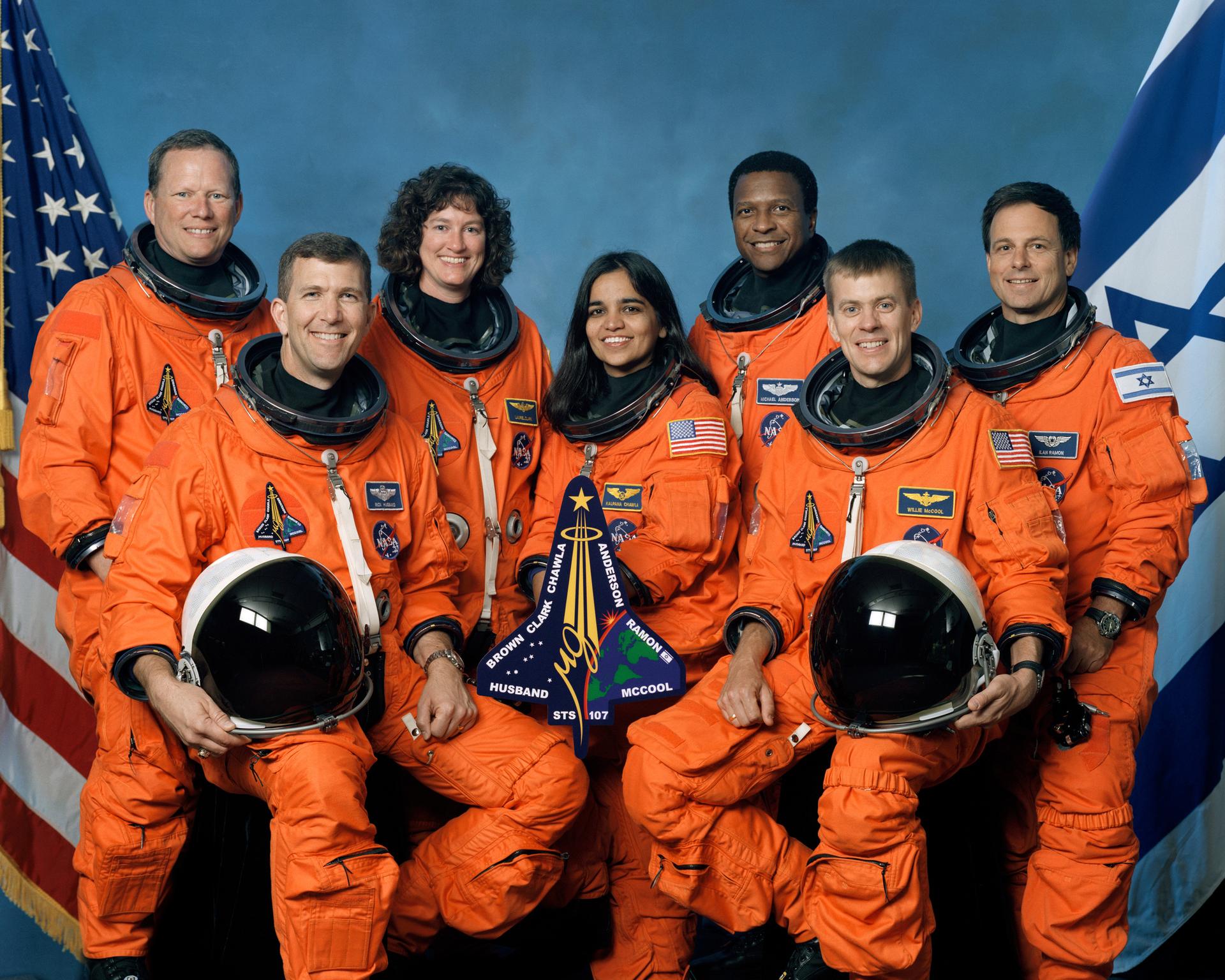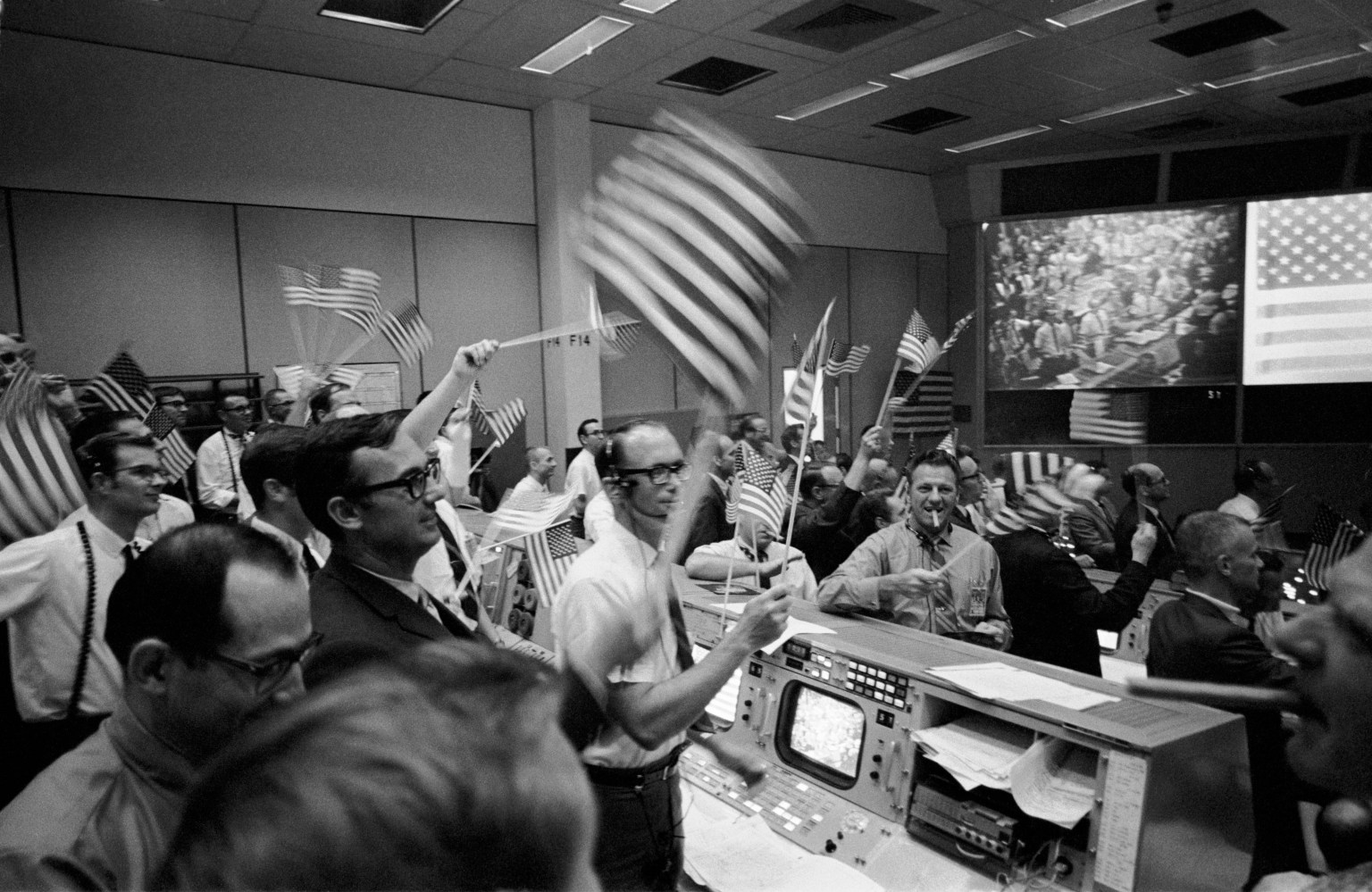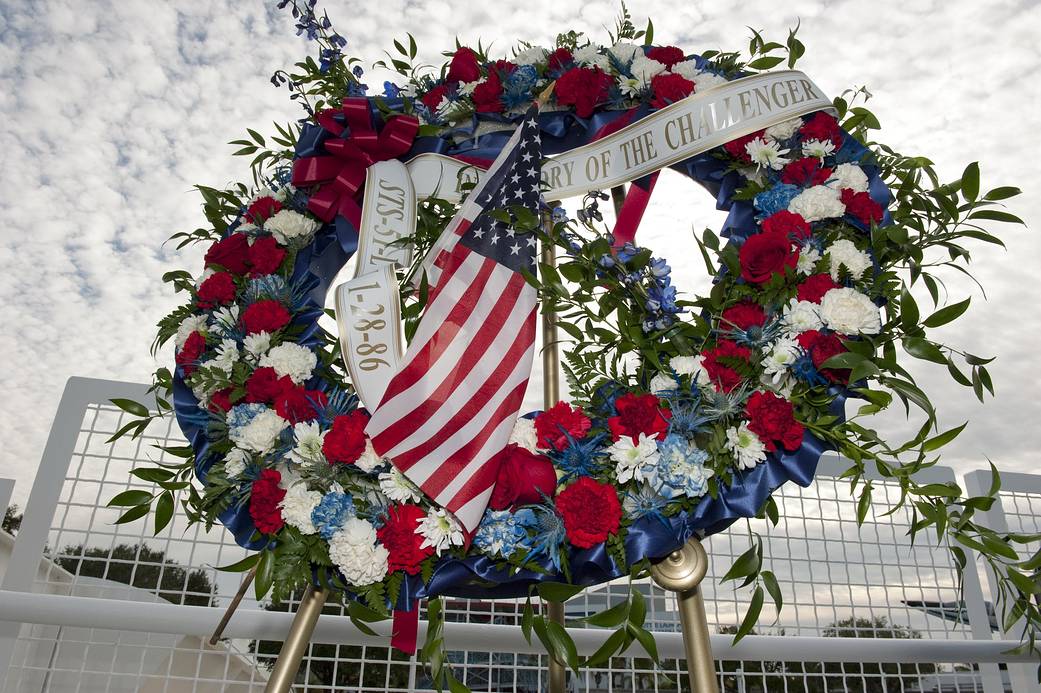The following are the biographies of the individuals whom served on the Columbia Accident Investigation Board. These biographies originally appeared on the CAIB Web site in 2003.
Admiral Hal Gehman
Adm. Harold W. Gehman Jr., U.S. Navy retired, completed more than 35 years of active duty in October 2000. His last assignment was as NATO’s Supreme Allied Commander, Atlantic, and as the Commander in Chief of the U.S. Joint Forces Command, one of the five U.S. Unified Commands.
Immediately after retiring, Gehman served as Co-chairman of the Department of Defense review of the terrorist attack on the USS Cole.
Gehman graduated from Pennsylvania State University with a Bachelor of Science degree in Industrial Engineering and a commission in the Navy from the Naval ROTC program. He served at all levels of leadership and command and was promoted to four-star admiral in 1996. He became the 29th Vice Chief of Naval Operations in September 1996. As Vice Chief he was a member of the Joint Chiefs of Staff, formulated the Navy’s $70 billion budget, and developed and implemented policies governing the Navy’s 375,000 personnel.
Rear Admiral Stephen Turcotte
Rear Admiral Stephen A. Turcotte is the Commander of the Naval Safety Center in Norfolk, Virginia. He graduated from Marquette University NROTC in 1975 with a Bachelor of Science Degree in Political Science. Upon graduation, he was ordered to flight training and was designated a Naval Aviator in 1977. A seasoned and decorated aviator, Turcotte has flown more than 5,500 flight hours in 15 different aircraft and logged over 500 carrier landings. He has earned Masters Degrees in National Security and Strategic Studies from the Naval War College and in Management from Salve Regina University.
His tours have included several aviation squadrons, as well as shipboard and staff assignments. He commanded an aviation squadron, has served on the Joint Staff (Operations Division), was Commanding Officer of the Jacksonville Naval Air Station, and served as Deputy Commander of the Joint Task Force Southwest Asia at Prince Sultan Air Base, Saudi Arabia.
In January 2002, he became the 48th Commander of the Naval Safety Center, the Navy’s leading organization responsible for accident investigations, mishap analysis and dissemination of information to the fleet.
Major General John Barry
Maj. Gen. John L. Barry is Director, Plans and Programs, Headquarters Air Force Materiel Command, Wright-Patterson Air Force Base, Ohio.
Barry is a 1973 honor graduate of the U.S. Air Force Academy. He graduated from Fighter Weapons School, and was a test and evaluation pilot at Nellis Air Force Base, Nev. He was selected as a White House Fellow at NASA and worked as the NASA administrator’s executive assistant and White House liaison during the Challenger accident, and he served as the Military Assistant to the Secretary of Defense during Operations Desert Shield and Desert Storm, and during the dissolution of the Soviet Union.
He has commanded an Air Force fighter squadron, and, in a combat zone, a fighter operations group and a composite wing. He served as commander of Air Force units, where he led the recovery of a wing following the Blackhawk helicopter shoot-down at Incirlik Air Base, Turkey. His assignment prior to his current position was the Strategic Planner for the U.S. Air Force.
Major General Kenneth W. Hess
Maj. Gen. Kenneth W. Hess is the Air Force Chief of Safety, Headquarters U.S. Air Force, Washington, and Commander, Air Force Safety Center, Kirtland Air Force Base, N.M.
Hess entered the Air Force in 1969 through Officer Training School at Lackland Air Force Base, Texas, and has extensive staff experience at Headquarters U.S. Air Force, the Joint Staff and U.S. Pacific Command. He has commanded three Air Force wings: 47th Flying Training Wing, 374th Airlift Wing and 319th Air Refueling Wing. Prior to assuming his current position, Hess was Commander of 3rd Air Force, Royal Air Force Base, Mildenhall, England. He is a command pilot with more than 4,200 hours in various aircraft..
Dr. James N. Hallock
Dr. James Hallock is Manager of the Aviation Safety Division at the Department of Transportation’s Volpe Center.
He received BS, MS and PhD degrees in Physics from the Massachusetts Institute of Technology and authored or co-authored two patents and more than 135 papers and reports. He worked in the Apollo Optics Group of the MIT Instrumentation Lab (now the Draper Lab) from 1963 to 1966, dealing with the selection of Earth landmarks for updating guidance computers on Apollo and the potential effects of solar flare radiation on Apollo’s optical systems. From 1966 to 1970, he was a physicist at the NASA Electronics Research Center and did research in modern optics (holography and spatial filtering) and developed a spacecraft attitude determining system. In 1970 he joined the DOT Transportation Systems Center (now the Volpe Center) and studied aircraft wake vortices, developed aviation safety systems, and conducted many detailed safety studies.
Mr. Steven B. Wallace
Mr. Steven B. Wallace, Director, Office of Accident Investigation, Federal Aviation Administration
Steve Wallace was named Director of the FAA Office of Accident Investigation in May, 2000. He has overall responsibility for FAA accident and incident investigation activities, related training and quality control programs, and for implementation of corrective measures based on investigation findings.
From 1991-2000, Wallace was the FAA’s senior representative at the U.S. Embassy in Rome, Italy, serving as the principal FAA contact for civil aviation authorities and the aviation industry in a 29-country geographic area spanning Central Europe, the Mediterranean and the Middle East.
From 1984-91, Wallace was manager of the FAA’s Transport Airplane Directorate Standards Staff in Seattle, a group of engineers, pilots, and technical writers responsible for developing requirements for certification of transport aircraft.
Wallace began his FAA career as an attorney in the New York (1976-79) and Seattle (1979-84) Regional Offices. He holds a Bachelor of Science Degree in Psychology from Springfield College, a Juris Doctor Degree from St. John’s University School of Law, and is admitted to legal practice before New York State and Federal courts. A licensed pilot since 1977, Wallace holds a commercial pilot’s license with multi-engine and instrument ratings.
Brigadier General Duane Deal
Brig. Gen. Duane W. Deal is Commander, 21st Space Wing, Peterson Air Force Base, Colorado. The Air Force’s largest, geographically and organizationally, the wing consists of a work force of more than 6,000 officer, enlisted, civilian and contract employees. The wing provides missile warning and space control for combat forces and the governments of the United States, Canada, and the United Kingdom through its 43 units operating 15 weapon systems at 20 worldwide locations in 5 countries spread across 9 time zones.
He holds a B.S. in Physics, an M.S. in Systems Management, and an M.S. in Counseling/Psychology. He has also held a Research Fellowship with the RAND Corporation, was a Fellow of the Harvard Center for International Affairs, and completed the Executive Development Program at Dartmouth. He is the author of more than 20 articles, and has contributed to 3 books.
He has extensive flight experience in seven aircraft types, including the SR-71 Blackbird, space operations experience in missile warning and space control, and extensive aircraft maintenance and logistics experience. He has served on or presided over 10 mishap investigations for space launch and aircraft incidents. He is serving in his eighth commander position in the U.S. Air Force.
Mr. Scott Hubbard
Scott Hubbard, Director, NASA Ames Research Center, is responsible for the organization and oversight of Ames’ research efforts.
Prior to his appointment, Hubbard was deputy director for research. In March 2000, Hubbard was called to NASA Headquarters where he served as the first Mars program director. Hubbard had responsibility for successfully redefining all robotic Mars missions in response to the Mars failures in 1999. The Mars Odyssey mission launched during Hubbard’s tenure is now successfully collecting data at the Red Planet. In previous roles at Ames, Hubbard was associate director for astrobiology and space programs. Hubbard was one of the founders of astrobiology and helped establish NASA’s new Astrobiology Institute, serving as the initial director.
Previously, Hubbard served as staff scientist at Lawrence Berkeley Laboratory; was a founder, vice president and general manager for Canberra Semiconductor (a high-tech San Francisco Bay Area start-up company), and held the position of senior research physicist at SRI International.
Mr. Roger E. Tetrault
Mr. Roger E. Tetrault was appointed Vice Chairman and Chief Executive Officer of McDermott International, Inc. on March 1, 1997. He became Chairman on June 1, 1997 and retired in August 2000 after 24 years of service with McDermott.
Tetrault left McDermott and its major subsidiary, Babcock and Wilcox, in 1991 to join General Dynamics as corporate vice president and president of its Electric Boat Division. At Babcock and Wilcox he had been the Vice President and Group Executive of the Government Group, where he was responsible for the diversified government business segment that included nuclear reactors, pressure vessels, steam generators and pressurizers for nuclear submarines and aircraft carriers. The Group also included ammunition and missile components, specialty pipe fabrication, Advanced Solid Rocket Motor bodies for the Space Shuttle, and other diverse weapon systems.
Dr. Sheila Widnall
Dr. Sheila Widnall, Professor of Aeronautics and Astronautics and Engineering Systems. Massachusetts Institute of Technology (MIT), Cambridge. She has served as Associate Provost, MIT, and as Secretary of the Air Force. As Secretary of the Air Force, Dr. Widnall was responsible for all affairs of the Department of the Air Force. Dr. Widnall was also responsible for research and development and other activities prescribed by the President or the Secretary of Defense.
Since returning to MIT, she has been active in the Lean Aerospace Initiative, with special emphasis on the space and policy focus teams. Her research activities in fluid dynamics have included the following: boundary layer stability, unsteady hydrodynamic loads on fully wetted and supercavitating hydrofoils of finite span, unsteady lifting-surface theory, unsteady air forces on oscillating cylinders in subsonic and supersonic flow, unsteady leading-edge vortex separation from slender delta wings, tip-vortex aerodynamics, helicopter noise, aerodynamics of high-speed ground transportation vehicles, vortex stability, aircraft-wake studies, turbulence, and transition.
Dr. Douglas D. Osheroff
Dr. Douglas D. Osheroff was awarded the 1996 Nobel Prize in Physics. He shares the prize with two colleagues from Cornell University for their discovery of superfluidity in helium-3. Dr. Osheroff received his BS from California Tech and Ph.D. from Cornell. He is the G. Jackson and C.J. Wood Professor of Physics and Applied Physics at Stanford University. Dr. Osheroff was a member of the technical staff at the Department of Solid State and Low Temperature Research at Bell Laboratories in the 1970s. As a graduate student at Cornell before that, Osheroff and his thesis advisors, David M. Lee and Robert C. Richardson, discovered the first of three superfluid phases of liquid helium-3, at a temperature only about two-thousandths of a degree above absolute zero. Osheroff is a leader in the study of superfluidity and of the properties of thin superconducting films. He served as Chairman of the Physics Department from 1993 until August 1996. The Nobel Prize caps a long list of awards Osheroff has received. A member of the National Academy of Sciences, he has won the Simon Memorial Prize, the Oliver Buckley Prize, and was named a MacArthur Fellow. Osheroff also won a Walter J. Gores Award for Excellence in Teaching.
Dr. Sally Ride
Dr. Sally Ride is a former NASA astronaut and the first American woman in space. She is a Professor of Space Science at the University of California at San Diego. Dr. Ride received her BS in Physics, BA in English, MS and Ph.D. in Physics from Stanford University. Her first spaceflight was aboard the Space Shuttle Challenger in 1983. Her second was also aboard the Challenger in 1984. During those flights Dr. Ride deployed communications satellites, operated the robot arm and conducted experiments in materials, pharmaceuticals, and Earth remote-sensing. Training for her third spaceflight was interrupted by the Space Shuttle Challenger accident. Dr. Ride served as a member of the Presidential Commission investigating the accident and chaired its subcommittee on Operations. She then served as NASA’s first director of Strategic Planning. Dr. Ride spent two years at Stanford University’s Center for International Security and Cooperation. In 1989 she became the Director of the University of California’s California Space Institute, and joined the UCSD faculty. She is a Fellow of the American Physical Society, member of the National Research Council’s Space Studies Board and has served on the Boards of the Congressional Office of Technology Assessment and the Carnegie Institution of Washington and the President’s Committee of Advisors on Science and Technology. Dr. Ride has written four science books for children: To Space and Back; Voyager; The Third Planet, and The Mystery of Mars.
Dr. John Logsdon
Dr. John Logsdon is Director of the Space Policy Institute at George Washington University’s Elliott School of International Affairs, where he has been a faculty member since 1970. He received his BS in Physics from Xavier University and Ph.D. in Political Science from New York University. Dr. Logsdon’s research interests focus on the policy and historical aspects of U.S. and international space activities. He has written and edited numerous books, articles and reports on space policy and history, and has recently completed the basic article on “space exploration” for the new edition of Encyclopedia Britannica. Dr. Logsdon is currently a member of the NASA Advisory Council and the Commercial Space Transportation Advisory Committee of the Department of Transportation. He is a fellow of the American Institute of Aeronautics and Astronautics and the American Association for the Advancement of Science, and a member of the International Academy of Astronautics. Dr. Logsdon recently served on the Committee on Human Space Exploration of Space Studies Board, National Research Council and served on the Vice President’s Space Policy Advisory Board and NASA’s Space and Earth Sciences Advisory Committee. He has been a fellow at the Woodrow Wilson International Center for Scholars and was the first holder of the Chair in Space History of the National Air and Space Museum.



























